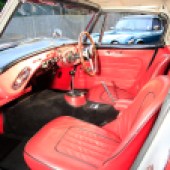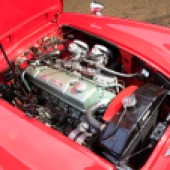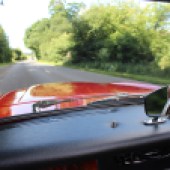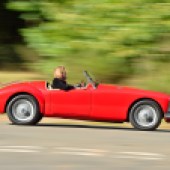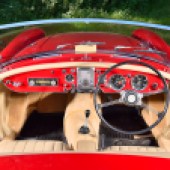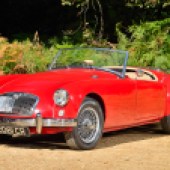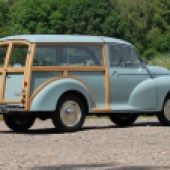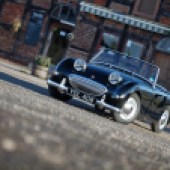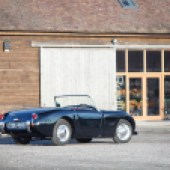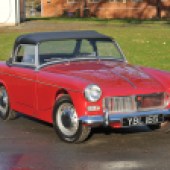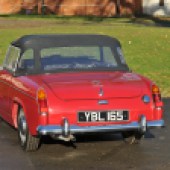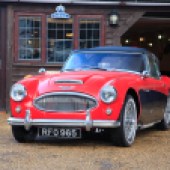The Oxfordshire town forever associated with MG also had a hand in some other very significant classics. We take a look at the legends of Abingdon
The history of Cecil Kimber’s Morris Garages operation will forever be linked to the Oxfordshire town of Abingdon in the minds of classic car enthusiasts, but in fact the MG story began some way away in Oxford. It was here that the first MG-badged models were produced before by 1929 demand had expanded to the point where a proper factory was required and the former leather works in Abingdon was the chosen site.
From the first M-Type Midget until Michael Edwardes closed the plant in 1980, the Abingdon site produced all the MG-badged sports cars and the plant also gained the reputation for being one of the most productive and least disruptive plants in the British Leyland empire. It was perhaps because of this and its expertise in hand-assembling low-volume cars that Abingdon also turned out some other significant cars without the famous octagon badge, as well as housing the famous BMC Competitions department.

MG M-Type Midget
The earliest MGs had been essentially sporting versions of mainstream Morris models and were large, expensive cars, meaning sales slumped as the 1920s recession hit. The move to the Abingdon premises coincided with the launch of a new, smaller model in the shape of the M-Type Midget, the car often regarded as being the first MG to be created as a model in its own right rather than a modified Morris model. As with previous MGs though, it made extensive use of Morris componentry, including the chassis and engine from the Morris Minor launched the previous year.
The chassis was revised for the MG to run lower suspension and friction dampers, with the car sitting on leaf-sprung solid axles. The 847cc single-carbed Morris engine was surprisingly modern in its concept, boasting an overhead camshaft and crossflow cylinder head providing 20bhp (later uprated to 27bhp) and with a three-speed box took the 500kg car to a top speed of 64mph – serious stuff for the 1920s.
Of course the standard factory offering was just a blank canvas for many owners and even in the 1930s George Eyston’s much-modified ‘Magic Midget’ was clocked at 120mph. Luckily by then the Morris-derived rod brakes had at least been updated to a cable system.
Unsurprisingly, the Midget was a hit and the name would continue until the Abingdon plant itself was axed in 1980. The M-Type remains significant for kick-starting MG’s reputation for affordable everyman sports cars.
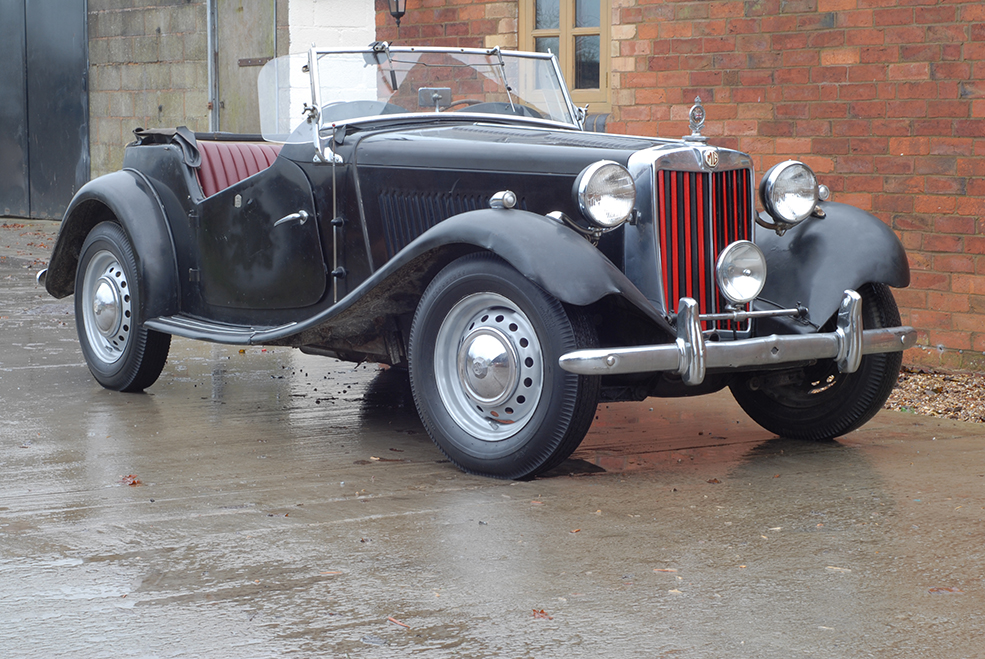
MG T-Type Midget
The original Midget would evolve into the J-Type which used the same engine but the larger chassis designed by MG for the C-Type and D-Type. The J-Type would itself evolve into the P-Type in 1934 which would later be developed into the first of the T-Series cars in 1936.
Gaining a three-inch wider track and an extra seven inches in wheelbase, the first of the T-Series was known retrospectively as the TA and clocked up over 3000 sales before being updated into the TB just in time for production to be halted as the factory was turned over to war work.
In some ways the TA was a retrograde step for MG, since the overhead-cam engine had by then been abandoned by Morris on the grounds of cost and complexity, leaving the MG powered by the more pedestrian OHV engine from the contemporary Wolseley 10. This was offset by MG modifications to carburation, camshaft and exhaust which produced 50bhp.
In any case the OHV engine was to be a stop-gap since the TB was the first MG to use the newly developed XPAG engine, a pushrod design of 1250cc which produced 54bhp.
The small Abingdon plant survived the war unscathed thanks to its smaller size and location outside Oxford, meaning that MG was among the first car makers to get back in business again when peace resumed.
Unsurprisingly, they picked up where they left off and the first postwar MG launched in 1945 was the TC, essentially the prewar TB model but with detail improvements including a four-inch wider body and a hydraulic timing chain.
The TC was the first MG to be exported in quantity to the USA and it’s generally credited as being the model which began the American lover affair with MG sports cars. Many US servicemen stationed in the UK during the war period had developed a taste for British sports cars and with the government demanding car makers export as much as possible it was an ideal opportunity. Thanks to the car’s popularity Stateside, the TC clocked up 10,000 sales before being replaced by the TD Midget in 1950.
The TD was designed with the USA in mind, modernised to gain independent front suspension, rack-and-pinion steering and 15-inch steel disc wheels in place of the spoked wires alongside a further five inches increase in width. Road testers praised the TD for its vastly improved ride comfort, although diehard MG fans regarded it as having lost its edge. In the end, these concerns were largely irrelevant, since over 30,000 TCs left Abingdon, a staggering 78% per cent of them exported to the USA.
The T-Series would end with a further 13,002 facelifted TF models which ushered in a new sloping radiator grille and, for the final TF1500 models, the XPAG engine enlarged to 1465cc and 64bhp under the XPEG name. The end of the TF in 1953 would be the last of the design which had served MG well from the humble beginnings of the M-Type.
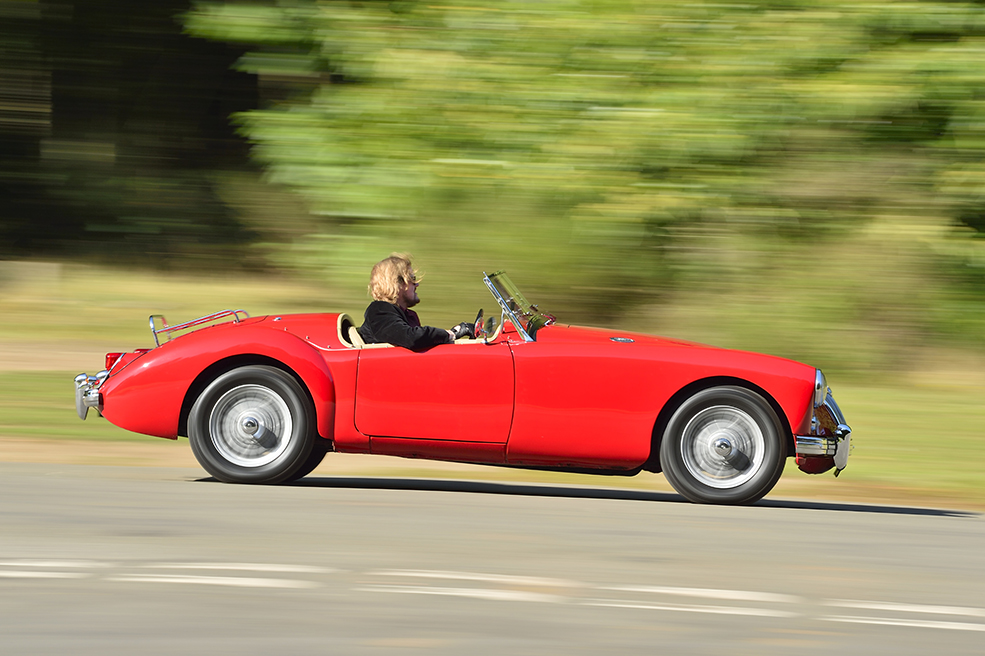
MGA
Much like the TD, the MGA owes its very existence to the demands of the American market, since BMC chairman in the early 50s, Leonard Lord, was only persuaded to allow its development when sales of the prewar T-Series models started to collapse rapidly as the car’s age became increasingly obvious.
MG had been desperate to develop a replacement for some time and had even worked up a prototype on the quiet, using a sleek new body penned by MG’s Syd Enever for an MG TD Le Mans racer.
At the time the ink was barely dry on the contract between Lord and Donald Healey which had created the Austin-Healey brand and understandably he was reluctant to create an in-house challenger. A year later though, the sales of the MG TF had slumped so catastrophically that the green light was given to the project which was intended to be the first in a new generation of MG products – hence the ‘A’ in the name.
Taking the Le Mans-derived car as a basis, development work was swift and in 1955 the car was ready for the show stand at Frankfurt. Enever’s bodywork largely remained, but the chassis frame rails had been spaced out, allowing the seats to drop down inside them for a lower-slung stance.
Underneath, the suspension was largely lifted from the MG TF, but when it came to the engine, the delay proved to be a blessing in disguise, since the old XPAG motor could be replaced by the newly-developed B-Series engine as found in the BMC saloons. In 1489cc form it produced 68bhp and as a bonus meant the production car wasn’t saddled with the huge bonnet bulge the prototype had needed to clear the older engine.
The B-Series was a far more modern design than the old XPAG engine and gave the new MG a crucial showroom appeal. In later incarnations, it would jump to 72bhp, then 80bhp thanks to a stretch to 1588cc and then 1622cc which provided the MGA with 102mph pace.
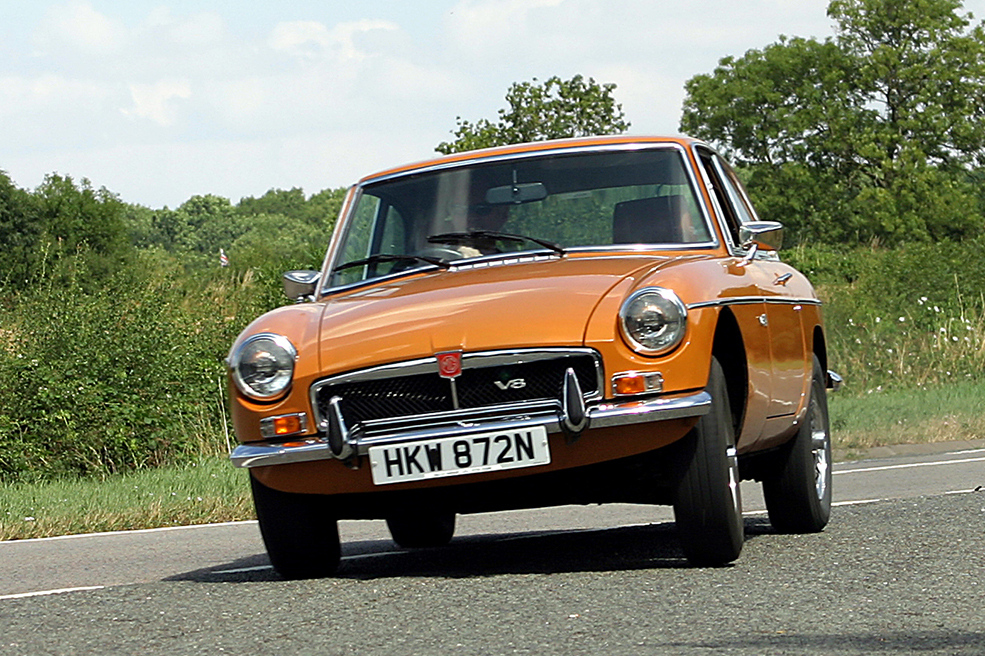
MGB
It was the success of the part-monocoque Sprite/Midget which encouraged MG to go with a modern monocoque body for its MGA successor and the car may have borrowed its running gear from the BMC parts bins but was otherwise a ground-up MG development.
Like the Mk1 Jaguar, unfamiliarity with the new body construction method meant it was somewhat over-engineered. The large central tunnel and hefty box-section sills are connected with beefy crossmembers but the result was a commendably rigid result – especially when compared to the separate-chassis competition.
Attached to the front end was a subframe carrying the traditional MG recipe of wishbone front suspension, with the lever arm damper forming the upper link.
The new car retained the MGA’s B-Series powerplant, which was bored out from its existing 1622cc to a more useful 1798cc. The four-speed box was carried over from the A, complete with its non-synchro first gear, something which wasn’t unusual at the time but which wouldn’t be remedied until 1967.
Those unfamiliar with the B may not realise it but the car was almost constantly improved. The five-bearing crank and oil cooler arrived in 1964, the stronger Salisbury rear axle was added in 1965 and from 1967 the Mk2 provided an all-synchro box. The black honeycomb-centre grille was fitted from 1969 and in 1975 the famous Bayerflex ‘rubber’ bumpers were added for the demands of the US market, the styling for this performed under Harris Mann at Longbridge.
Of all the MG models to leave the Abingdon line, it was the MGB which lays the best claim to being a legend of Abingdon, having been created there and also being the last model to leave the lines in 1980.
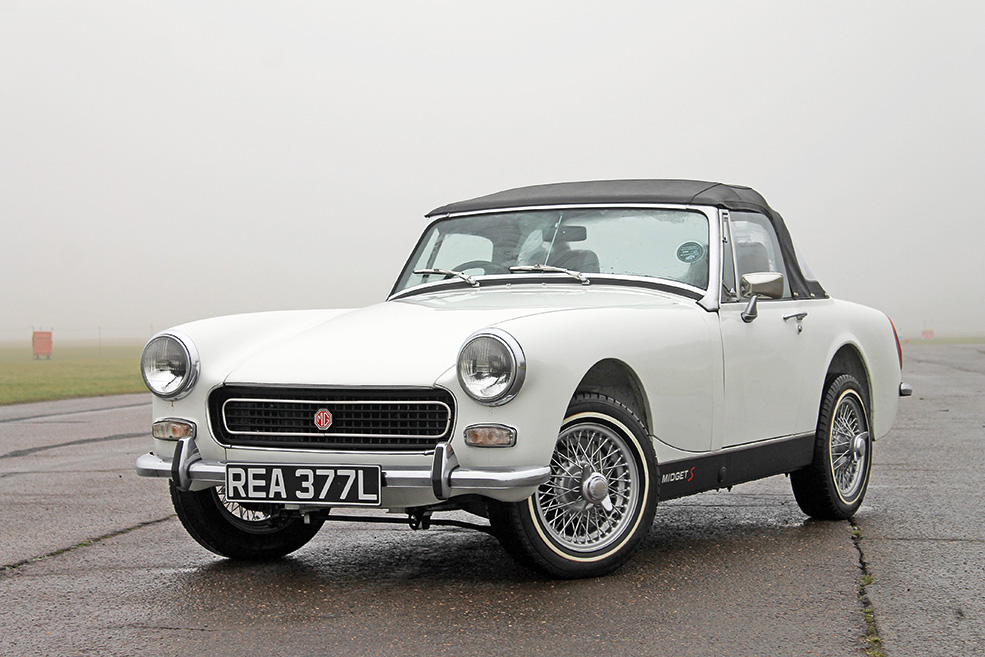
MG/Austin Healey ‘Spridget’
Despite its name, the Midget launched in 1961 technically wasn’t an MG at all, essentially a rebadged Austin-Healey Sprite which was developed outside the sprawling BMC empire, by the Healey Motor Company working out of a former cinema in Warwick.
The BMC-Healey deal which gave us the Healey 100 was a success, with the car eventually developed into the ‘Big Healey’ and this encouraged both parties to repeat the exercise with a smaller, more affordable sports car.
Once again, the recipe was simple: take the engine and gearbox from the A35, add a Morris Minor steering rack and install them in a Healey-designed chassis with a simple sports body.
The result was the Frogeye Sprite, unveiled to great acclaim in 1958 and an immediate sales success, at the time the cheapest four-cylinder sports car on the market at £455. The standard car really did take the idea of basic to the limit: there wasn’t even an opening bootlid while heater, front bumper, tonneau, rev counter and even screenwasher were on the options list.
The Sprite’s construction was unusual, in that it was a kind of hybrid between a body-on-chassis and monocoque bodyshell. Box structures ran from the front of the central tub with an outrigger for the front suspension and steering. Two longitudinal structures connected this to a second crossmember under the scuttle, with the sills and propshaft tunnel connecting to the rear structure supporting the axle and suspension.
The Sprite was originally intended for assembly at Longbridge until it was realised that its unique construction prevented it from being made on the same line as the A35: the Sprite had to have the engine lowered in from above, whereas cars like the A35 were effectively lowered on to the running gear. Luckily for MG, the decision reinforced Abingdon’s role as a sports car making hub.
The engine was the familiar BMC A-Series in 948cc flavour, running an identical 8.3:1 compression to the Minor and A35 although for the Sprite it gained twin SU carbs and uprated valve springs for a heady 45bhp at 5500rpm, enough to give the 602kg Sprite performance which was serious stuff in 1958. According to Autocar, it could see off many 1.5-litre cars: top speed was 81mph and 0-60 mph came up in 20.9 seconds.
The Mk1 Sprite with its distinctive one-piece bonnet and those headlights which gave it the nickname, remained in production essentially unchanged until 1962 when it was replaced by the much more conventional looking Mk2, with headlights in the usual place and a proper opening bootlid.
It was at this point that an MG-badged version of the car was launched, the idea being that the Midget would be slightly less basic than the Austin-Healey badged car. Apart from badging and trim though, they were identical.
When the contract with the Healey Motor Company expired in 1971, BMC chose not to renew it. By then the company didn’t need the Healey connection and was able to continue selling the car as the MG Midget for the rest of the decade. Evolution saw the car gain the 1098cc A-Series in 1962 and then the 1275cc engine in 1966, giving it pace to rival the bigger MGB with a 94mph top speed courtesy of its 65bhp. In a sign of things to come, the Midget gained the 1500 Triumph engine in 1974, perhaps reflecting Triumph’s move to dominance as the sports car brand within BL.
The Midget would disappear in December 1979, leaving just the MGB to keep the Abingdon plant busy.
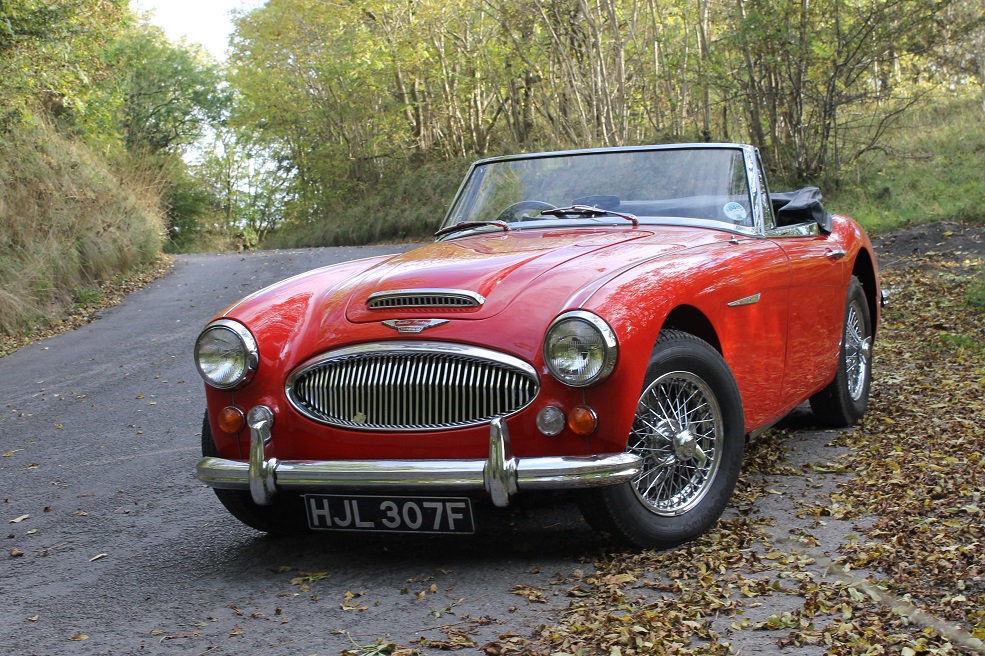
Austin-Healey 3000
The original Healey 3000 is loved for the elegance of its lines but curiously, it was destined to remain the only complete car styled by Gerry Coker, a body engineer rather than designer.
The car was born as the Healey 100 with the intention of moving Healey away from its heavy coachbuilt cars into a new, modern world as epitomised by the Jaguar XK120. With the Riley engine used in his existing models facing an unknown future, Healey settled on the Austin six-cylinder from the A90 as being the closest equivalent. The car was displayed at the 1952 Earls Court motor show purely as a concept but when BMC boss Leonard Lord caught sight of it, he shook hands with Donald Healey there and then on a deal for BMC to produce the car with Austin-Healey badging. At least, that’s the accepted version of events, but Healey’s son Geoffrey later admitted that Lord must have known all about the car beforehand via the engine supply deal.
Production started in 1953 and the car was updated into the 110bhp ‘BN2’ in 1955 and then with the MGA snapping at its heels, the lightweight, 132bhp 100S arrived in 1956.
The car we know as the ‘Big Healey’ was created in 1956 when the six-cylinder C-Series engine was fitted and the car renamed ‘100-6’ in order to lift the Austin-Healey away from direct competition with the MGA and into the Jaguar class. Initially the 2.6-litre A90 engine was fitted and while the extra torque improved drivability its 117bhp made it no faster than the four-pot car.
This was addressed by fitting the 3-litre version of the C-Series to create the Healey 3000 in 1959 which boasted 124bhp and Jaguar-style standard front disc brakes. The 3000 became the Mk2 in 1961, gaining triple SUs and revised camshaft for 130bhp, later boosted to 148bhp with the Mk3 in 1963 courtesy of bigger HD8 carbs, uprated cam and revised exhaust.
Production was a drawn-out affair in the best British sports car tradition: panels were supplied by Boulton Paul and chassis by Thompson Pressings, both in Wolverhampton and were then assembled into bodies by Jensen in West Bromwich before the completed bodies were trucked down to Longbridge to add trim and running gear. In 1957, production was moved from Longbridge to Abingdon, which had been designated BMC’s centre for sports car operations.
The Big Healey would be produced at Abingdon until the end in 1967, with Abingdon also housing the BMC Competitions department which was responsible for the car’s motorsport exploits. It may have been developed in Warwick and begun life in Birmingham but the Big Healey can most definitely be considered a legend of the Abingdon site. In an interesting footnote, Healey himself also noted that the quality of the cars supplied by Abingdon was notably better than those coming from Longbridge.
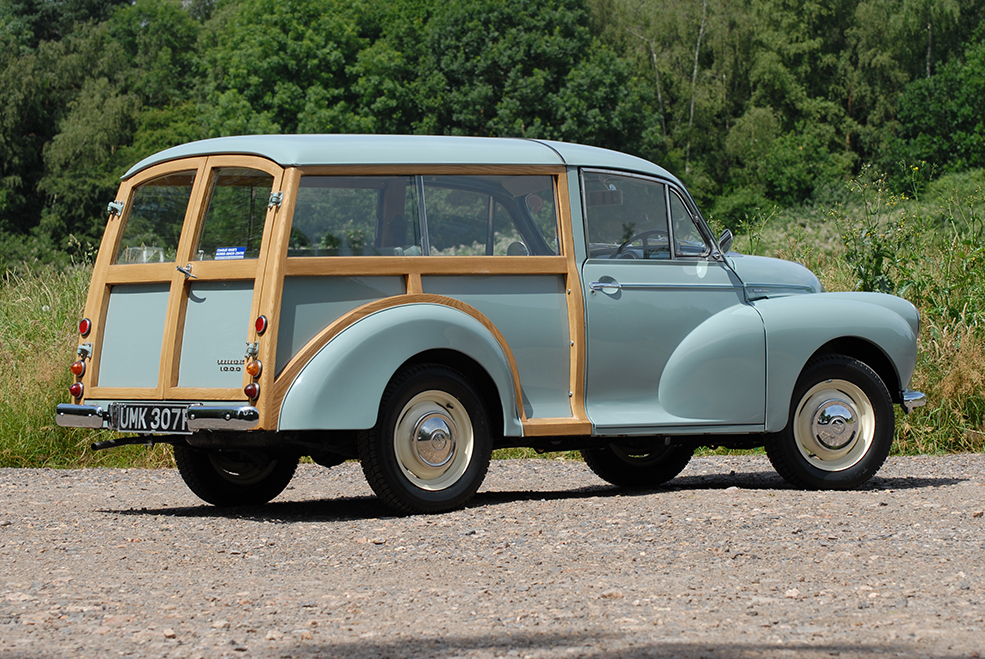
Morris Traveller
The Morris Minor needs no introduction to readers but is usually associated with the Cowley factory 10 miles away from Abingdon. The Minor was intended as a break from tradition for Morris and a chance for Issigonis to employ all his forward-thinking ideas about small car design which bßy the mid 1940s meant the use of a monocoque bodyshell in place of a traditional separate chassis.
With the science of unitary construction very much in its infancy, this presented a problem when it came to creating the Traveller estate and the commercial variants. The solution was to create a hybrid construction employing the unitary front half of the Minor but with a chassis grafted on to the structure from the B-post backwards.
It’s this construction which explains why the Traveller uses a structural wooden frame for its rear bodywork and also explains why the cars were assembled not at Cowley with the saloons but at Abingdon.
The low production volumes of the Traveller lent itself well to Abingdon, where it’s said the work was slotted in around other jobs. Author Bob Frampton’s engaging book ‘Made in Abingdon’ about life on the shop floor recounts that the Traveller was made at a rate of around 20 a day and production was generally fitted in around MGAs, Midgets and Healey 3000s once enough sports cars had been produced.
Like the Healey, the Traveller’s production was a convoluted affair and involved the ash body frames being produced in the wood shop at Morris’s bodies facility in Coventry and then trucked to Abingdon where they were assembled into frames and mounted on the bare chassis-cabs supplied from Cowley.
As anyone who has restored one will know, the construction of the cars is exceptionally labour-intensive and Abingdon was an ideal place to make the hand-built Traveller.




